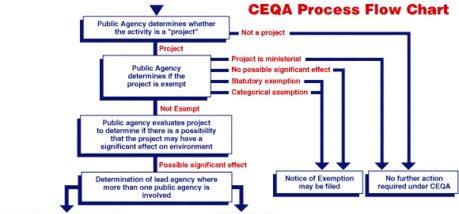As California grapples with a persistent housing crisis, recent adjustments to the California Environmental Quality Act (CEQA) are poised to reshape the state’s development landscape. With lawmakers scaling back certain regulatory requirements, the hope is to expedite housing construction and alleviate the severe shortages contributing to skyrocketing prices. Advocates argue that these changes could usher in a new era of building, while critics warn of potential environmental trade-offs. As the state looks to balance growth with sustainability, the implications of these modifications could reverberate for years to come, making it a pivotal moment in California’s ongoing struggle for affordable housing.
California’s CEQA Revisions Aim to Accelerate Housing Development
In a significant move aimed at addressing California’s chronic housing shortage, recent revisions to the California Environmental Quality Act (CEQA) seek to streamline the approval process for housing projects across the state. Lawmakers argue that the changes will facilitate faster construction timelines, ultimately leading to an increase in the housing supply. By reducing the regulatory burden, the state hopes to attract developers to launch new residential projects more readily. The revisions encompass a range of measures designed to promote sustainability while balancing the urgent necessity for affordable housing.
Critics, however, express concerns that scaling back CEQA protections may undermine environmental safeguards and community input in the development process. The revisions include provisions that simplify the environmental review for projects that meet certain criteria, which are expected to expedite approvals significantly. Key aspects of these changes include:
- Streamlined Environmental Reviews: A faster evaluation process for specific housing developments.
- Focus on Infill Development: Encouraging construction in already urbanized areas to minimize sprawl.
- Community Engagement Requirements: Mandatory public meetings to ensure resident voices are still heard.
As California navigates the complexities of balancing environmental concerns with housing needs, the success of these CEQA revisions will likely be measured in the number of new homes constructed and the overall impact on communities across the state. Observers are keenly watching how these policy changes will play out in real-time and whether they can catalyze a housing boom critical to California’s economy.
Understanding the Impacts: How CEQA Adjustments Could Transform Urban Planning
The adjustments to the California Environmental Quality Act (CEQA) could pave the way for a significant shift in urban planning, introducing a set of opportunities that may not only streamline development but also accelerate the much-needed housing supply across the state. By easing the regulatory burdens traditionally imposed by CEQA, local governments might be empowered to transform underutilized spaces into vibrant, livable communities. These changes are expected to address various urban challenges, including the affordable housing crisis, traffic congestion, and environmental sustainability.
Key aspects of these CEQA adjustments might include:
- Streamlined Approval Processes: Shortening timelines for project approvals can lead to quicker developments.
- Encouraging Mixed-Use Developments: Facilitating the integration of residential and commercial spaces can enhance community engagement.
- Balancing Growth with Environmental Concerns: Adapting policies to foster sustainable practices while promoting urban expansion.
To better understand the anticipated impacts, consider the following table showcasing potential changes in housing development timelines:
| Current Timeline | Proposed Timeline Post-CEQA Adjustments |
|---|---|
| 12-24 months | 6-12 months |
| Extensive Environmental Reviews | Targeted Assessments |
| Lengthy Public Comment Periods | Streamlined Engagement |
If implemented effectively, these modifications could not only facilitate a housing boom but also promote sustainable urban growth that aligns with California’s long-term environmental goals. As the state grapples with a historic housing shortage, the revisions to CEQA could emerge as a vital catalyst in reshaping urban landscapes, fostering economic development, and ultimately improving the quality of life for California residents.
Strategic Recommendations for Stakeholders in California’s Housing Market
As California seeks to stimulate its housing market by scaling back the California Environmental Quality Act (CEQA), stakeholders must adopt a multifaceted approach to leverage this opportunity effectively. First and foremost, collaboration among local governments, developers, and community organizations is essential. Establishing clear communication channels can help streamline the process of project approval. Additionally, stakeholders should prioritize sustainability in their development plans, ensuring that new housing construction meets environmental standards while maximizing density in urban areas. This could enhance community acceptance and mitigate opposition.
Furthermore, stakeholders should focus on educating the public about the benefits of increased housing supply. Initiatives might include:
- Community Workshops: Engage residents in discussions about the need for housing and the positive impacts on local economies.
- Incentives for Developers: Propose tax credits or subsidies for projects that provide affordable housing options.
- Partnerships with Nonprofits: Work with organizations dedicated to housing equity to ensure diverse community needs are met.
To illustrate the potential impact of diverse housing options, the following table highlights projected housing types and their respective benefits:
| Housing Type | Benefits |
|---|---|
| Single-Family Homes | Promotes community stability |
| Multi-Family Units | Increases density and affordability |
| Accessory Dwelling Units | Provides flexible living options |
Final Thoughts
In conclusion, as California grapples with a persistent housing crisis, the recent scaling back of the California Environmental Quality Act represents a significant shift in the state’s approach to development. Advocates argue that easing regulatory burdens could unlock much-needed housing projects and stimulate economic growth, providing a potential lifeline for those seeking affordable homes. However, critics caution that rapid development could compromise environmental protections and community integrity. As stakeholders navigate this delicate balance, the state stands at a pivotal moment, one that will shape its urban landscape for years to come. The success of this initiative will ultimately depend on how effectively California manages its ambitious goals while ensuring that environmental and community interests are not sidelined in the pursuit of growth. As the situation unfolds, all eyes will be on the Golden State to see if these changes indeed lead to the housing boom many are hoping for.









